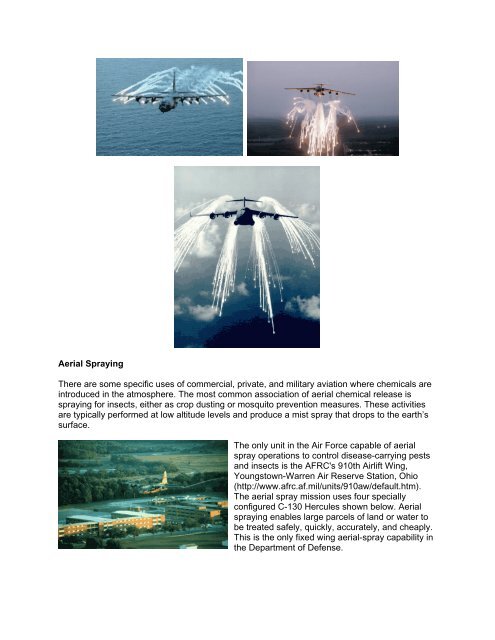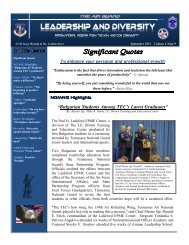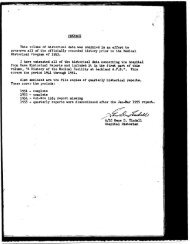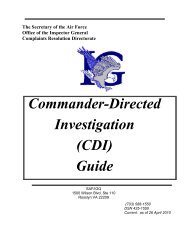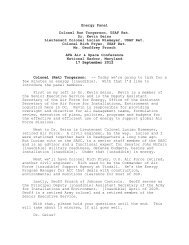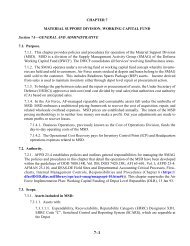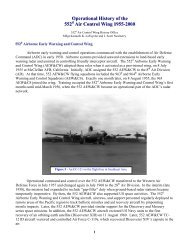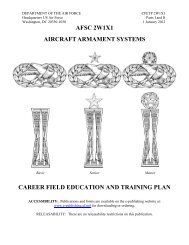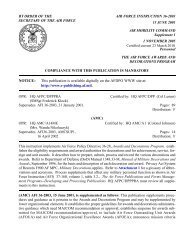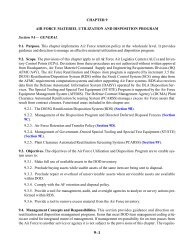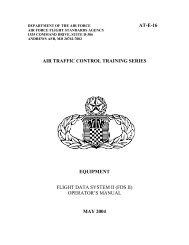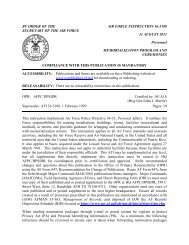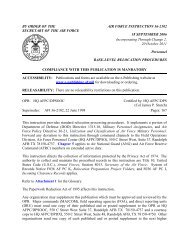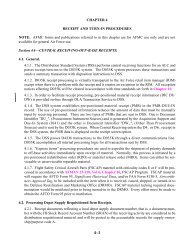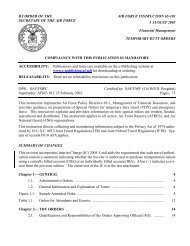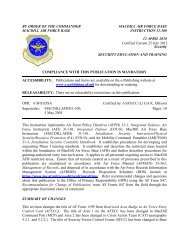CONTRAILS FACTS - Air Force Link
CONTRAILS FACTS - Air Force Link
CONTRAILS FACTS - Air Force Link
- TAGS
- contrails
- link
- www.af.mil
Create successful ePaper yourself
Turn your PDF publications into a flip-book with our unique Google optimized e-Paper software.
Aerial Spraying<br />
There are some specific uses of commercial, private, and military aviation where chemicals are<br />
introduced in the atmosphere. The most common association of aerial chemical release is<br />
spraying for insects, either as crop dusting or mosquito prevention measures. These activities<br />
are typically performed at low altitude levels and produce a mist spray that drops to the earth’s<br />
surface.<br />
The only unit in the <strong>Air</strong> <strong>Force</strong> capable of aerial<br />
spray operations to control disease-carrying pests<br />
and insects is the AFRC's 910th <strong>Air</strong>lift Wing,<br />
Youngstown-Warren <strong>Air</strong> Reserve Station, Ohio<br />
(http://www.afrc.af.mil/units/910aw/default.htm).<br />
The aerial spray mission uses four specially<br />
configured C-130 Hercules shown below. Aerial<br />
spraying enables large parcels of land or water to<br />
be treated safely, quickly, accurately, and cheaply.<br />
This is the only fixed wing aerial-spray capability in<br />
the Department of Defense.


